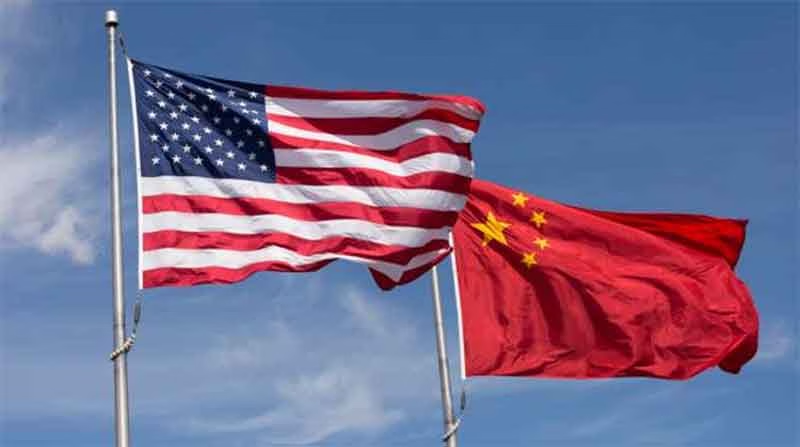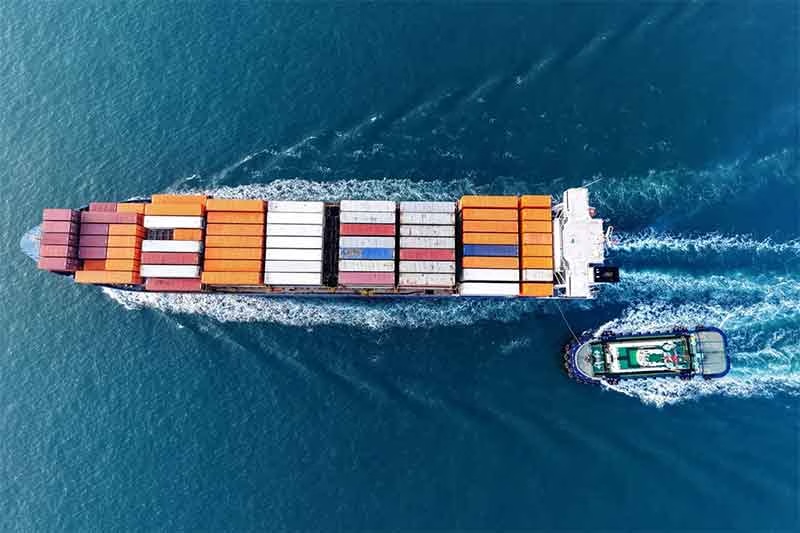
Anyone familiar with George Orwell’s 1984 will recognise its depiction of a fragmented world, where major economies operate as isolated, fortress-like islands, grouped into three geopolitical superstates: Oceania, Eurasia, and Eastasia. These entities are locked in perpetual conflict and negotiation, not to secure decisive victories, but to reinforce internal control, consume surplus and resources, and maintain scarcity, somewhat echoing Charles Tilly’s theory of “durable inequality”, where entrenched hierarchies are sustained through exploitation and restriction. Today’s global order, marked by ongoing trade wars and economic recalibrations, appears to be veering toward a similar scenario. Deals and disputes over resource allocation and economic shocks suggest a state of constant tension, where resolution is secondary to control. This tension is further exacerbated by increased militarisation throughout the world, with big tech playing an ever-larger role in shaping economic and political power.
From the viewpoint of Capital, nations like the US, China, Russia, and India are not rivals, allies, or autonomous entities defined by emotional or ideological ties. Capital operates with cold indifference, flowing wherever returns are maximised, unbound by borders or emotional lineages. Viewing the world through this lens reveals that current tensions like trade wars, sanctions, or negotiations are less about national interests and more about the mechanics of global capitalism, which has reached a critical juncture of imbalance. This imbalance manifests in ballooning debt, shifting trade patterns, and the growing influence of technology as a tool of political, economic and strategic leverage.
Every major crisis in the global economy essentially becomes a liquidity crisis, a shortage of money flow. The United States, once the undisputed leader of global finance capital, is now teetering on the edge of insolvency. Since the 2008 global financial crash, the US has been printing dollars to manage its internal financial crisis. As a result, its debt has tripled in proportion to its GDP by the start of this year. A major reason for this is that the dollar is still the world’s primary reserve currency. So, no matter how much the US increases its money supply by printing dollars, its value doesn’t fall accordingly. This is because other countries rush to buy dollars to stabilise their own currencies. As a result, despite the excess supply, the dollar’s value stays high. The increased dollar supply has inflated the prices of goods and financial assets, including real estate, stock markets, and particularly AI-related companies.
In traditional capitalism, large companies produced and sold goods, employing labour and paying wages. But in today’s age of finance capital, the biggest companies don’t necessarily produce goods in that sense. Instead, they profit by extracting various forms of rents, from control over currency, commodities, natural resources, and even digital platforms. This system is called rentier capitalism, with finance capital at its core. Meanwhile, the average person’s income has stagnated because most investments are going into automation, not jobs. The cost of living, of social reproduction keeps rising, pushing people to their limits. This contradiction is what makes the global economy increasingly unstable. Economic history shows that as long as credit flows, the system survives; but once the flow stops, crisis begins. We’re witnessing signs of such a halt worldwide.
Global capitalism today is in deep crisis, with the United States and China at its centre. The issues in both countries are different but complementary. For the US to reduce its massive debt, it needs to increase production, reduce consumption, cut expenditures, and address its trade deficit. China, on the other hand, needs to reduce its surplus, cut manufacturing, boost domestic consumption, and reduce debt. In other words, though the US and China pursue opposite monetary and trade policies, both nations face the same fundamental problem of capitalism: an excessive debt, a liquidity crisis. This has destabilised the entire capitalist system.
China’s liberalisation happened step-by-step and was state-managed. Initially, it capitalised on cheap labour, mobilising rural workers into urban production. Socially formed capital drove this labour regime in the early stages, but foreign investment was soon welcomed. Then came land and housing liberalisation, creating a massive real estate bull market which soared for twenty years. This resulted in new type of capital formations. Following this, underperforming state or even private enterprises were shut down or merged into larger corporations to facilitate consolidation of capital. Eventually, exclusive state control over resources like minerals and energy was relaxed to allow private capital. However, China never fully embraced full financial liberalisation. It still tightly regulates capital flows, investments, and monetary policy. As a result, speculative finance bubbles are less likely to burst in China than in the US, and the state’s control over the economy is much stronger. This control is leading China toward a path where it evolves from a rent-seeking finance-capital-driven state into a more advanced, technology-oriented state.
The US also seeks a similar outcome, albeit via a different route. The Trump administration’s strategy envisages a controlled devaluation of the dollar and thereby lowering the real cost of its debt which is owned by the creditor economies like EU, China, Japan, Canada and to boost demand for ultra long-term Treasury bonds, enabling cheap borrowing. This will make exports more competitive, reduce trade deficits, and will help manage inflation by importing cheap oil by influencing OPEC+. It seems like the US wants to follow China’s own strategy of selling ultra long-term bonds to push the crisis in future, that China has been doing for quite long now, although China uses state intervention and the US uses market-control mechanisms. While their paths differ, both these states are moving toward a new, tech-centric capitalist arrangement. Here, the state becomes the owner or regulator of tech firms, centrally controlling production, finance, and information flows. It becomes a techno-capitalist surveillance state where politics is centred around technological and informational control. Economists like Yanis Varoufakis have termed this as ‘techno-feudalism’.
But, at the heart of this system still lies debt which cannot be simply wiped away, since it is a contractual obligation. Resolving it would require either writing off debt (which would crash global financial markets) or creating a new, strict international agreement. In 1985, the Plaza Accord did exactly this: the US forced Japan and Germany to sell off their dollar reserves to lower the global value of the dollar and appreciate their own currencies, thereby financing US debt via buying up long-term Treasury bonds. Though successful, it created a huge financial bubble in Japan. Today, the Trump administration has taken a similar path pursuing a trade war against the European Union and especially China. History shows that such international arrangements like the Bretton Woods system or Latin America’s debt crises take time and involve extensive political bargaining. Institutions like the IMF and WTO usually mediate such compromises, but they were built to disperse US debt worldwide. Now, without reversing that arrangement i.e., moving away from so-called free-market globalisation. these countries won’t be able to stabilise and rebalance their economies.
So, in the near future, we may see a new geopolitical order. In this seemingly imaginary but increasingly plausible world, the superstates will resemble walled island continents with tight control over capital flows and trade. There’s a growing possibility that the US will form a bloc with nearby countries, Russia will lead Europe and Central Asia, and China will control East Asia. Each of these superstates will develop separate economic systems, distributing flows of capital and debt within their own regions. At the centre of each bloc will be a dominant nation, with surrounding countries acting as tributary vassal states with the burden of debt, unemployment, inflation, and cheap raw material extraction will fall on the weaker countries within each bloc. The US might build a consumption-driven, militarised, fossil-fuel-based economy, with Mexico, Brazil, and Argentina supplying food and minerals, while the US provides tech goods and security. Russia will trade gas, oil, and minerals with Europe and nearby countries. China will strengthen its domestic economy by injecting capital and increasing consumer spending, aiming to reduce export dependence. Countries like Vietnam, Indonesia and Malaysia could become China’s manufacturing hubs. In this emerging world order, the monopoly status of US dollar might get weaken. So, to keep market’s confidence in the US dollar while intentionally devaluing it, the US might peg it to a commodity basket consisting of gold and cryptocurrencies. And if other countries in play reject this settlement, a new neutral international currency might emerge, perhaps the Hong Kong or Singapore dollar, since these are not yet under the direct control of any superstate contender.
And India? Apart from its vast cheap labour market, it does not have much of a role elsewhere while no other country can compete India on this aspect. As a result, in exchange for gaining dominance over the Indian subcontinent, India may, at least for now, become part of the American bloc, sacrificing the future of millions of Indian working people engaged in agriculture and small and medium-scale domestic enterprises. If the U.S. brings its finance capital under some regulation, that capital may look to India for refuge. This may cause the stock market to swell in the short term, but it will also multiply uncertainty and instability in India’s economic structure.
The most terrifying and unique characteristic of this divided world will be extensive militarization, perpetual conflict, and artificial scarcity. Added to this will be surveillance technologies that will control people. In this new world, the major tech companies will become the true bearers of power. They will be the real drivers of a ‘superstate,’ where state power and corporate power merge into a kind of Orwellian control system. At the heart of this new regime will be technology- technology for surveillance, control, and data management. Just as in China, apps like WeChat record every transaction and conversation of citizens, similarly, companies like Palantir in the U.S. can predict who might rebel and when. The ultimate form of this technological surveillance will be a society where every citizen is viewed with suspicion by the state.
But behind this entire apparatus lies a systemic crisis, a deep anxiety of the growing population who does not serve any purpose in the system of value production, in one word, the “surplus population”. In the eyes of the state, they seem to be the “dangerous class” of the future whose poverty, unemployment, and deprivation could one day erupt into rebellion. This fear is pushing states to become more security-oriented, more technology-dependent, and more repressive. A permanent internal terror that has haunted capitalism since its inception: what if the ‘surplus’ created by the failures of the economic system rises in revolt?
Subscribe to Our Newsletter
Get the latest CounterCurrents updates delivered straight to your inbox.
Ananyo Mukherjee is a Doctoral Researcher in Development Studies, SOAS University of London












































